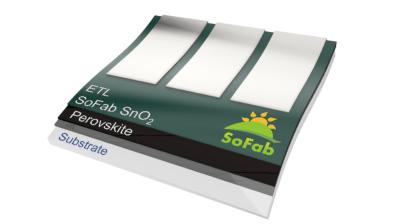Researchers report annealing-free flexible perovskite quantum dot solar cells that use UV-sintered Ga-doped SnO2 electron transport layers
Researchers from Hanyang University, Nankai University and Kookmin University have developed a room-temperature-processed tin oxide (SnO2) ETL preparation method for flexible perovskite quantum dots (PQD) solar cells. Low-temperature ETL deposition methods are especially desirable for fabricating flexible solar cells on polymer substrates.
The process involves synthesizing highly crystalline SnO2 nanocrystals stabilized with organic ligands, spin-coating their dispersion, followed by UV irradiation. The energy level of SnO2 is controlled by doping gallium ions to reduce the energy level mismatch with the PQD.


